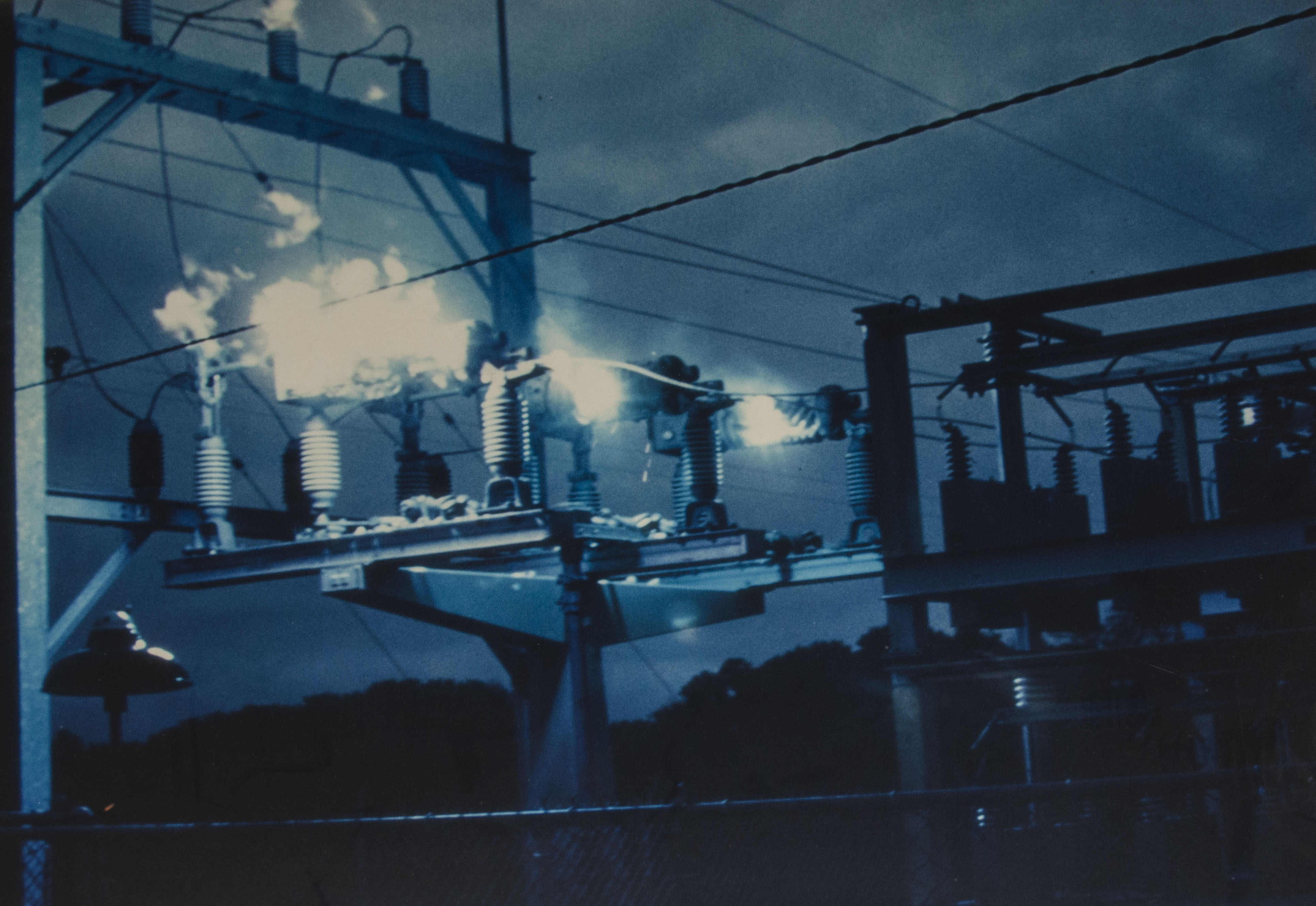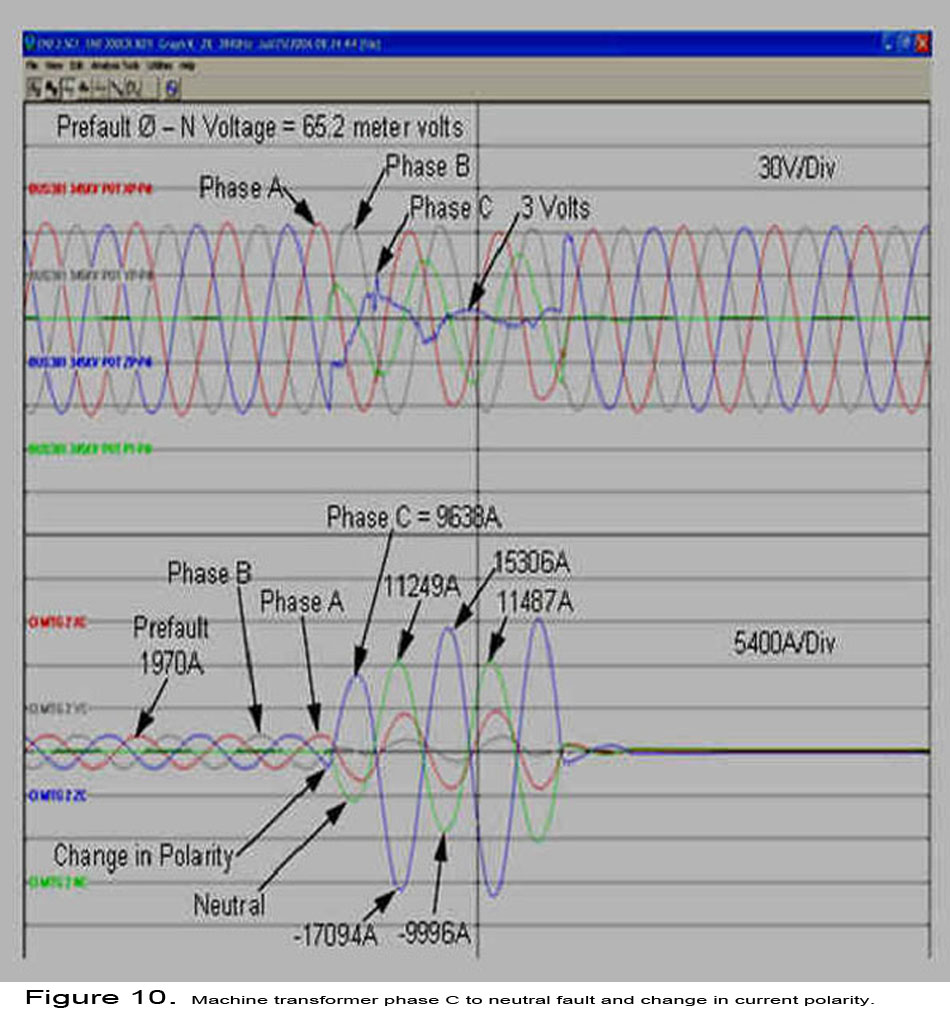
APPLICATIONS:
The list below is the possible applications for the STR Units. Click the appropriate button to get more details on the twelve applications.
5. Fault Data & Waveforms
Measurements:
The Basic STR Units among other parameters measure the fault current and record the waveforms.
|
|
DSTR Unit |
TSTR Unit |
|
Sampling Rate |
360 samples/cycle for 35 cycles |
360 samples/cycle for 10 cycles |
|
Prefault |
5 cycles |
5 cycles |
|
Postfault |
30 cycles |
5 cycles |
|
Maximum fault current |
20 kA for 30 cycles limit |
40 kA 5 cycles limit |
|
Fault Direction |
Yes |
Yes |
The Option B STR Units among other parameters measure the fault voltage and record the waveforms. (See Figures 9 and 10.)
|
|
DSTR Unit |
TSTR Unit |
|
Sampling rate |
360 samples/cycle for 35 cycles |
360 samples/cycle for 10 cycles |
|
Prefault |
5 cycles |
5 cycles |
|
Postfault |
30 cycles |
5 cycles |
Calculations:
The peak values of fault current and the lowest values of fault voltage are given along with the actual waveforms for each phase depending on whether STR Units are installed on all three phases or a single phase.
Applications:
- Most fault recorders are installed at substations and record transformer and line currents and voltages. The STR Units may be installed anywhere on transmission lines and on distribution lines including single phase laterals with normally low current levels. These Units do not need C.T.’s and V.T.’s because they measure the current and voltage directly.
- STR Units can be employed to replace traditional fault recorders and record data and produce waveforms at a sampling rate of 360 samples per cycle, which is typically faster than most installed systems, which are 128 samples per cycle.
- Since STR Units are not hard wired systems as conventional fault recorders, they can be relocated with relative ease by removing the Unit with a hot stick and reinstalling in a few minutes.
- Transfer Trip Schemes can cost from about $5,000 to $20,000 or more to implement on distribution systems and much more for transmission systems, whereas STR Units can perform this function at a very low price. More of these schemes may be needed to sense faults and send signals to fault clearing line equipment for DR’s interconnected to the system through a transformer.
- Fault Direction capability can considerably reduce the time to locate faults. The STR Unit’s software provides fault direction data which can be retrieved in near real time.
- Option B STR Units provide fault voltage waveforms which are essential for analysis of disturbances causing large industrial and small industrial customers loss of production or damaged products and tooling.

Benefits:
- With the addition of Distributed Resources (DR) interconnected to either the transmission system or the distribution system, it is advantageous to have fault recorders installed near these units to explain why they did not trip for certain types of faults.
- The fault data measurements have GPS location and are time stamped so the data from multiple STR Units can be easily time synchronized.

- The STR Unit fault recording feature is an added benefit at literally no cost, since it incorporates 12 or more functions into one device.
- Transfer Trip Schemes become necessary for many applications where DR units are interconnected through a transformer with added impedance to the distribution line and as a result the DR’s system protection devices may not see upstream faults, yet they are required to clear for all faults on the electric utility system per IEEE Standard 1547.
- Fault Direction devices are inherently a time saving feature which aid in reducing restoration times. This feature is especially applicable for remote and long rural distribution circuits which transverse through areas of heavily populated trees.
- Fault voltage recorded waveforms become very useful in determining why industrial plant equipment is interrupted resulting in significant production losses. Solutions may be proposed to alleviate these problems knowing the magnitude and time of the depressed voltage during faults.










